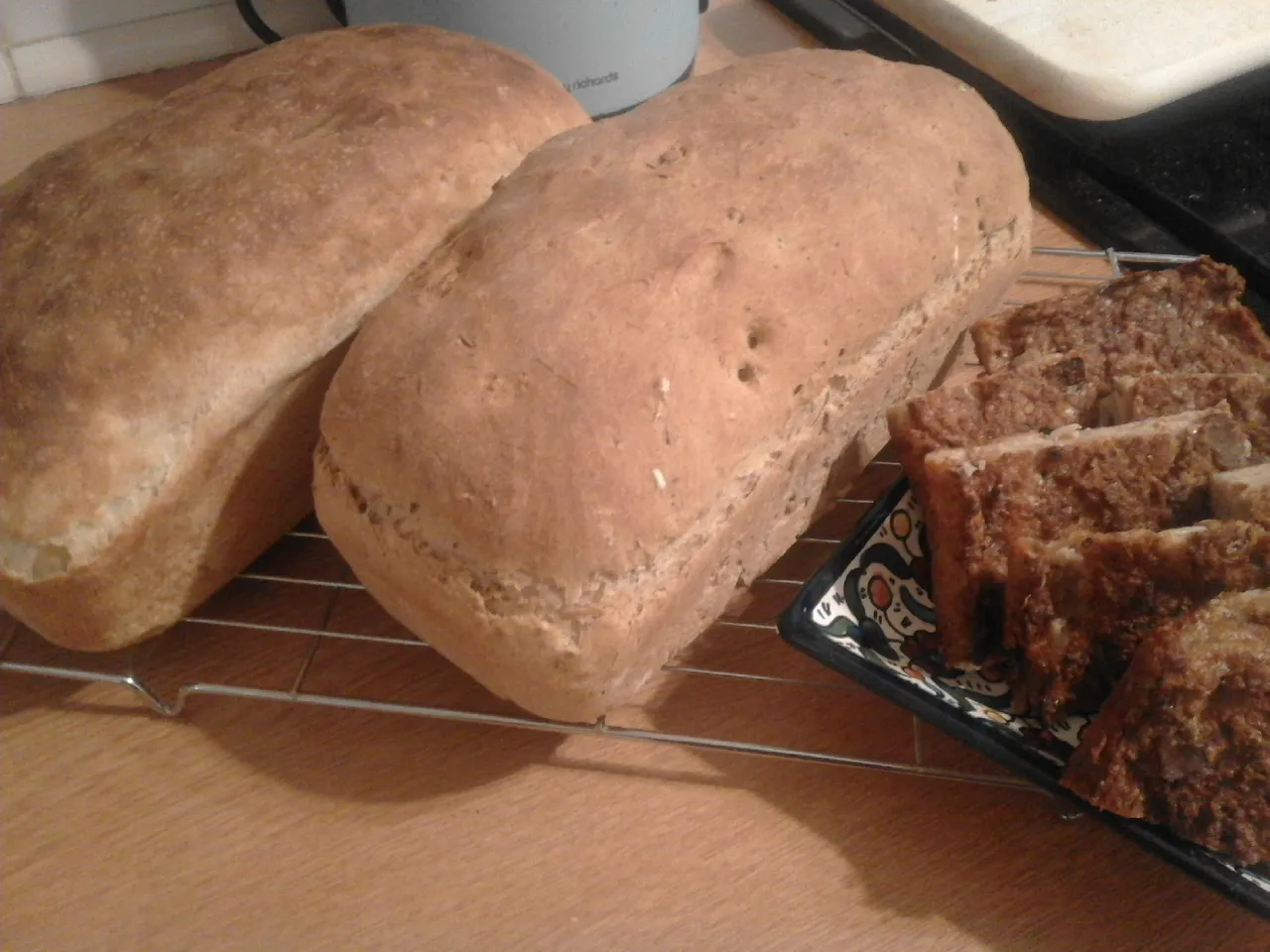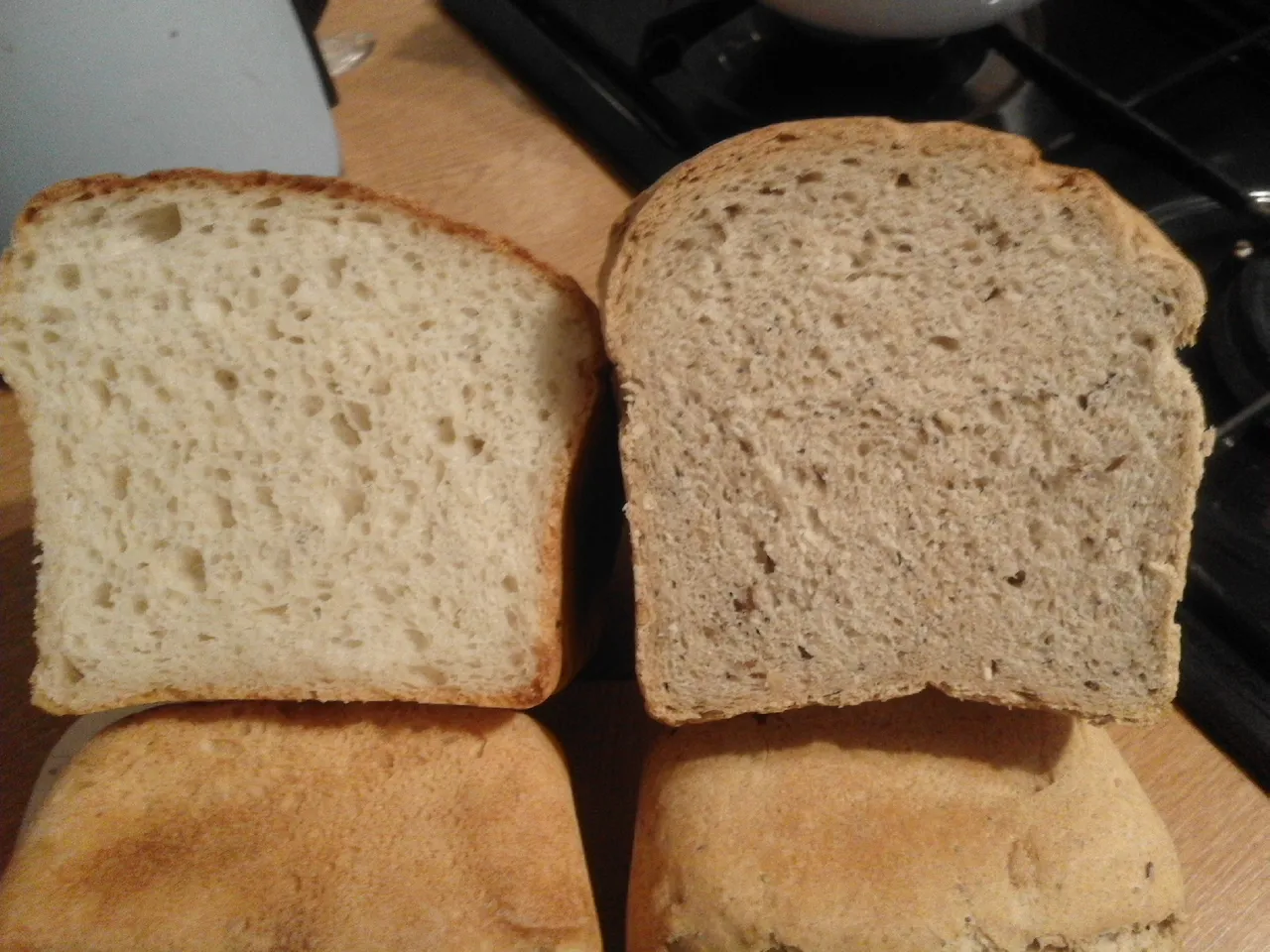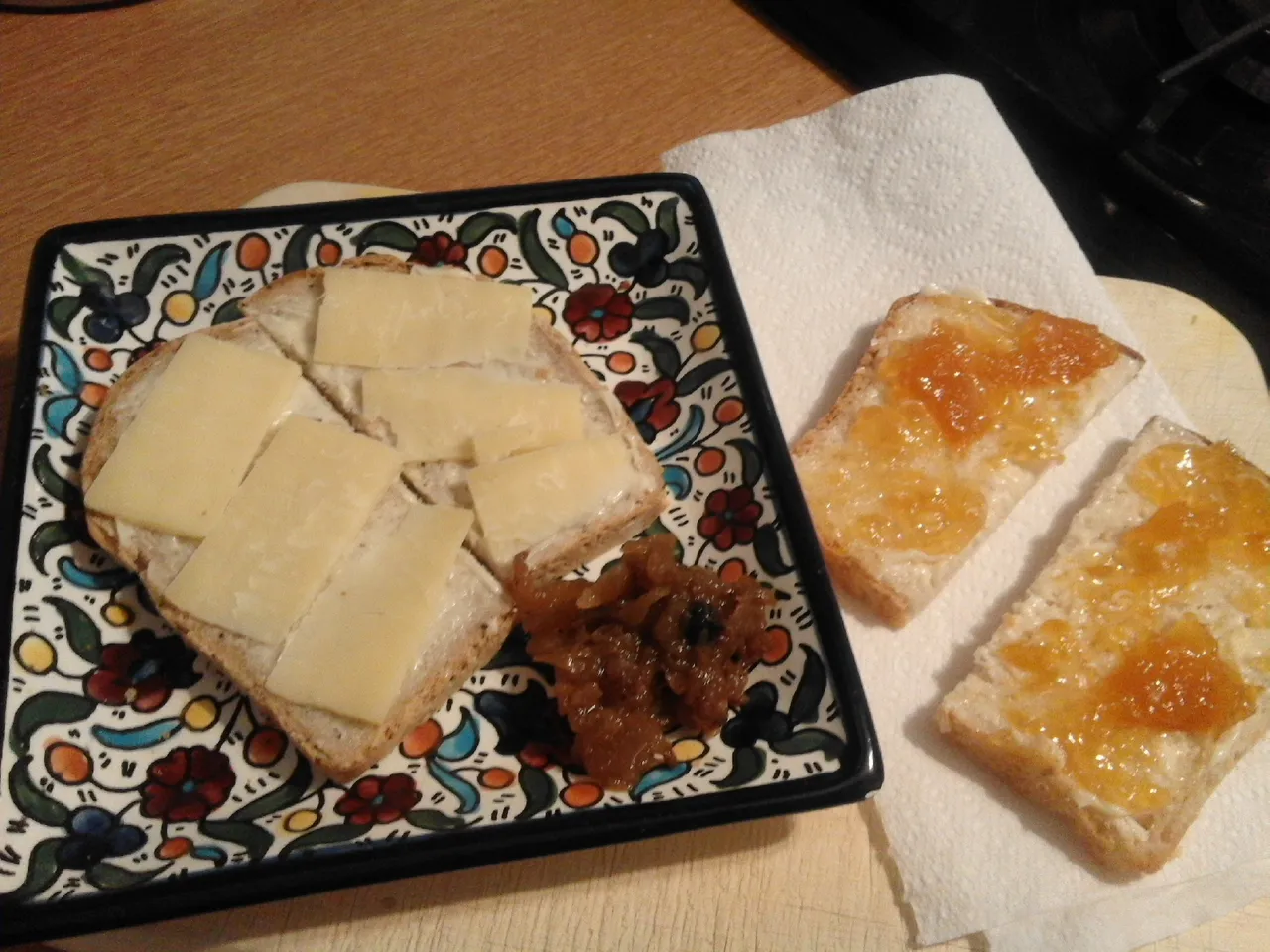I was craving bread yesterday.
The combination of antibiotics and staying at home was getting a bit much. The list of unwanted side effects (are there ever wanted side effects?) of the antibiotics include seeing and hearing things that aren't there. Well, I would have been happy to hallucinate bread.
Yesterday I felt well enough to start moving around and went for a bread frenzy: white, light rye with caraway and a bread pudding made from the remnants of my sourdough and stout yeoman loaves.
I couldn't remember whether I put yeast in with the light rye dough. I left it for a bit to see whether it would rise, it didn't, so I rolled the dough out thinly, scattered dried yeast over the whole surface, rolled up and then kneeded. It took a little longer to rise, but otherwise, it turned out fine.
I haven't made two different doughs side by side before. I usually bake one type one day, another type another day. It really surprised me how different each of the doughs were: the white dough was so light and airy and easy to work, it felt like it would float away. I half expected to come back in the kitchen and find it bobbing about the ceiling like an escaped ballooon filled with helium. The light rye, by contrast, was heavy and stocky, dun-coloured and harder work to kneed.

Weekly bread round up: 100% white, using Marriage's strong Canadian flour, 50% light rye/50% rustic flour with seeds and grains, savoury bread pudding.
Tea-time white bread
500g Marriage's strong white bread flour
300ml tepid water
15ml olive oil
7g dried active yeast
5g demerara sugar
5g salt
Mix dry ingredients, make a well in the centre, add warm water and oil, mix together. Turn out onto a floured surface and kneed briefly, shape into a ball, leave in a covered bowl in a warm place to rise until double in size (about an hour). Kneed again, shape and place in loaf tin, leave to rise until doubled in size. Bake in a pre-heated over at 230 degrees for fifteen minutes; reduce to 200 degrees for a further fifteen minutes. Turn out and leave to cool on a rack. Delicious plain or toasted with butter and jam.
Everyday light rye sandwich bread
250g Shipton Mill light rye bread flour
250g Bacheldre rustic bread flour
300ml tepid water
15g olive oil
7g dried active yeast
5g demerara sugar
5g salt
5g caraway seeds (optional)
Same method as above. You may want to leave it a little longer to rise. Delicious with cheese and cold meats.

Nice thin crust and even breadcrumb. The white crumb is very fluffy, more like a baguette; the light rye is denser and better for sandwiches. Another time I might add a little more water to the light rye loaf. Both breads make nice toast.
Butter Test

I love bread and jam, especially apricot jam, with a nice cup of ground coffee for breakfast at the weekends. I like the rye bread with savoury things - cheese, soup. Here I've teamed it with home made chutney. Both breads will cut into nice thin slices for sandwiches, or thicker for crunchy toast.
Savoury Bread Pudding
This was adapted from a recipe given to me by @muscara. It reminded me of bread dumplings I've had in Prague. The amounts are what I had to use up - vary to suit your leftovers!
250g stale bread
100g cheese (I used parmesan and cheddar)
100g chopped onion
1 egg
1/2 tsp dried sage
Moisten the bread with warm water (or milk or stock) until it is soft enough to mash; mix with all the other ingredients. Turn into a shallow lined baking tin and cook in a pre-heated medium oven (175 degrees or so) for 11/2 to 2 hours, depending on how solid you like it. Lift out of the tin using the paper liner and leave to cool on a rack. Cut into portions and store in a container in the fridge.
Sage and onion and cheese is a good mix. This would be good for lunch with some salad, or to take on a picnic - but you would need plenty of water to go with it.